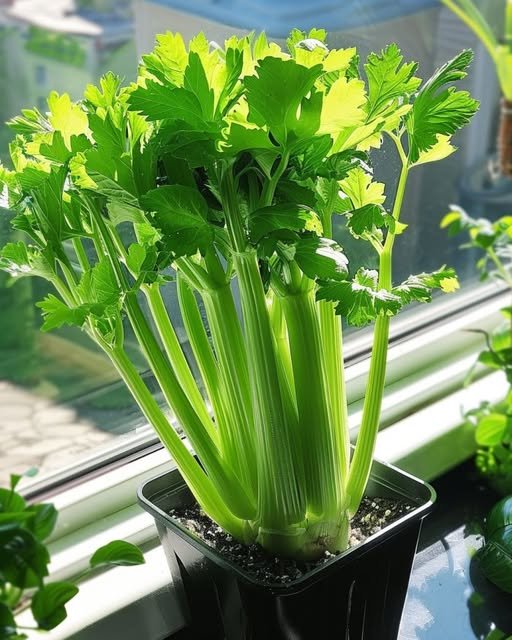Secret to Growing Onions All Year Round with This Simple Tip – Never Buy Onions Again!
Onions are a kitchen staple, adding flavor to countless dishes. Instead of constantly buying them, why not grow your own supply year-round? With the right technique, you can cultivate onions continuously, ensuring a fresh harvest whenever needed. This guide will walk you through an easy and efficient method to grow onions indoors, in containers, or in your backyard—saving you money and giving you a steady onion harvest.
Why Grow Onions at Home?
Growing onions at home comes with several benefits:
- Cost-Effective: No need to keep buying onions.
- Fresh Supply: Enjoy pesticide-free, organic onions year-round.
- Minimal Space Needed: Can be grown in containers, small gardens, or indoors.
- Easy to Grow: Requires little maintenance compared to other crops.
- Regrow from Scraps: Use leftover onion bulbs to regrow new plants.
Step 1: Choosing the Right Onion Variety
Different onion varieties suit different climates and purposes. Here are the main types:
- Short-Day Onions: Best for warm climates, requiring only 10-12 hours of daylight.
- Long-Day Onions: Suitable for cooler climates, needing 14-16 hours of daylight.
- Day-Neutral Onions: Can grow in any region, producing bulbs regardless of daylight hours.
- Green Onions (Scallions): Grow fast and can be harvested multiple times.
- Multiplier Onions: Produce clusters, perfect for continuous harvesting.
For year-round growth, day-neutral onions and green onions are the best choices since they adapt well to different conditions.
Step 2: Preparing the Soil
Onions thrive in loose, well-draining soil rich in organic matter. Follow these steps for optimal soil preparation:
- Choose a Sunny Spot: Onions need at least 6-8 hours of sunlight daily.
- Loosen the Soil: Use a garden fork or spade to break up compacted soil.
- Add Compost: Mix in aged manure or compost to enrich the soil with nutrients.
- Check pH Levels: Ideal soil pH is between 6.0 and 7.0.
- Ensure Proper Drainage: Raised beds or sandy soil help prevent waterlogging.
Pro Tip:
Adding wood ash or crushed eggshells boosts potassium and calcium levels, improving bulb development.
Step 3: Planting Onions
Onions can be grown from seeds, sets, or scraps. Each method has its benefits:
Growing from Seeds:
- Start Indoors: Sow seeds in trays 6-8 weeks before the last frost.
- Plant in Rows: Space seeds 1/4 inch deep and 1 inch apart.
- Transplant Seedlings: Move to the garden or container once they reach 4-6 inches tall.
Growing from Onion Sets (Small Bulbs):
- Plant Directly: Place sets 1 inch deep and 4-6 inches apart.
- Water Regularly: Keep soil moist but not soggy.
- Mulch to Retain Moisture: Use straw or dried leaves to conserve water.
Regrowing from Onion Scraps:
- Cut Off the Base: Leave about 1 inch of the root end.
- Place in Water: Set the base in a shallow dish with water, root side down.
- Wait for Sprouts: Within a few days, green shoots will emerge.
- Transplant to Soil: Once roots develop, plant in a pot or garden.
Step 4: Growing Onions Indoors or in Containers
If you lack outdoor space, you can still grow onions indoors:
- Choose a Deep Container: At least 6-8 inches deep with drainage holes.
- Use Potting Mix: A well-draining mix with compost works best.
- Place Near a Sunny Window: South-facing windows are ideal.
- Water Consistently: Keep soil evenly moist but avoid overwatering.
- Harvest Green Onions Continuously: Snip off the tops and let them regrow.
Step 5: Caring for Onions to Maximize Yield
Watering:
- Onions need 1-1.5 inches of water per week.
- Avoid overwatering, which can cause rot.
- Use mulch to retain moisture and reduce watering frequency.
Fertilization:
- Apply an organic fertilizer (10-10-10 NPK) every 2-3 weeks.
- Use compost tea or fish emulsion for a natural nutrient boost.
Pest and Disease Control:
- Common Pests: Onion thrips, aphids – use neem oil or insecticidal soap.
- Diseases: Downy mildew and root rot – prevent by avoiding overhead watering.
Step 6: Harvesting and Storing Onions
Onions take 90-120 days to mature, depending on the variety. Here’s how to know when they’re ready:
- The tops start to yellow and fall over naturally.
- The bulbs feel firm and reach the expected size.
- The necks (where the leaves meet the bulb) begin to dry out.
How to Harvest:
- Loosen the Soil: Use a fork to lift onions gently.
- Let Them Dry: Cure onions in a warm, dry place for 1-2 weeks.
- Trim and Store: Cut off the leaves and store onions in a cool, dry place.
Storing Onions:
- Store dry onions in a mesh bag for air circulation.
- Keep in a cool, dark place (not the refrigerator) for long-term storage.
- Green onions can be stored in the fridge for 2-3 weeks.
Step 7: Ensuring a Continuous Onion Harvest
Succession Planting:
- Plant new onion seeds or sets every 2-4 weeks for a continuous supply.
- Use a mix of short-day, long-day, and day-neutral onions for staggered harvests.
Companion Planting:
- Grow onions near carrots, lettuce, or tomatoes to deter pests.
- Avoid planting near beans or peas, as they compete for nutrients.
Regrowing from Harvested Bulbs:
- Keep a few bulbs from each harvest to plant again for the next cycle.
- Replant smaller bulbs in containers for indoor growth.
Conclusion
Growing onions year-round is simple, cost-effective, and rewarding. With the right techniques, you can ensure a continuous supply of fresh onions without ever needing to buy them again. Whether you grow them in the garden, in containers, or indoors, onions are a low-maintenance crop that fits any home garden. Start planting today and enjoy an endless harvest of homegrown onions!



